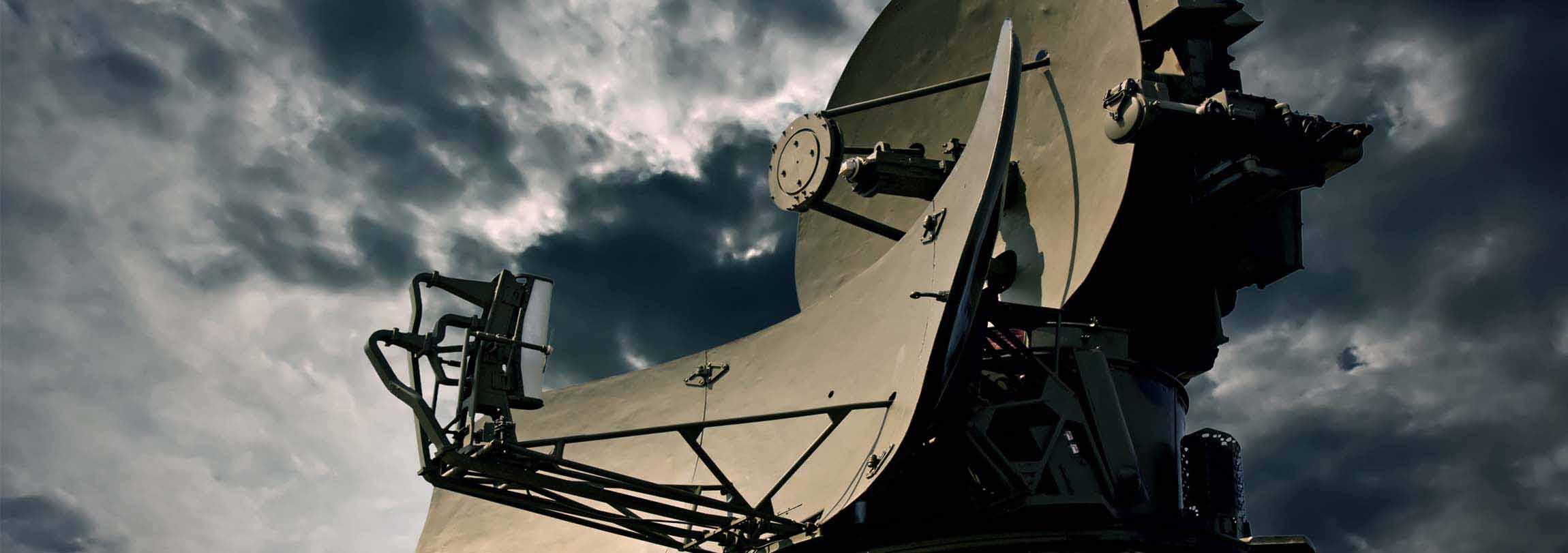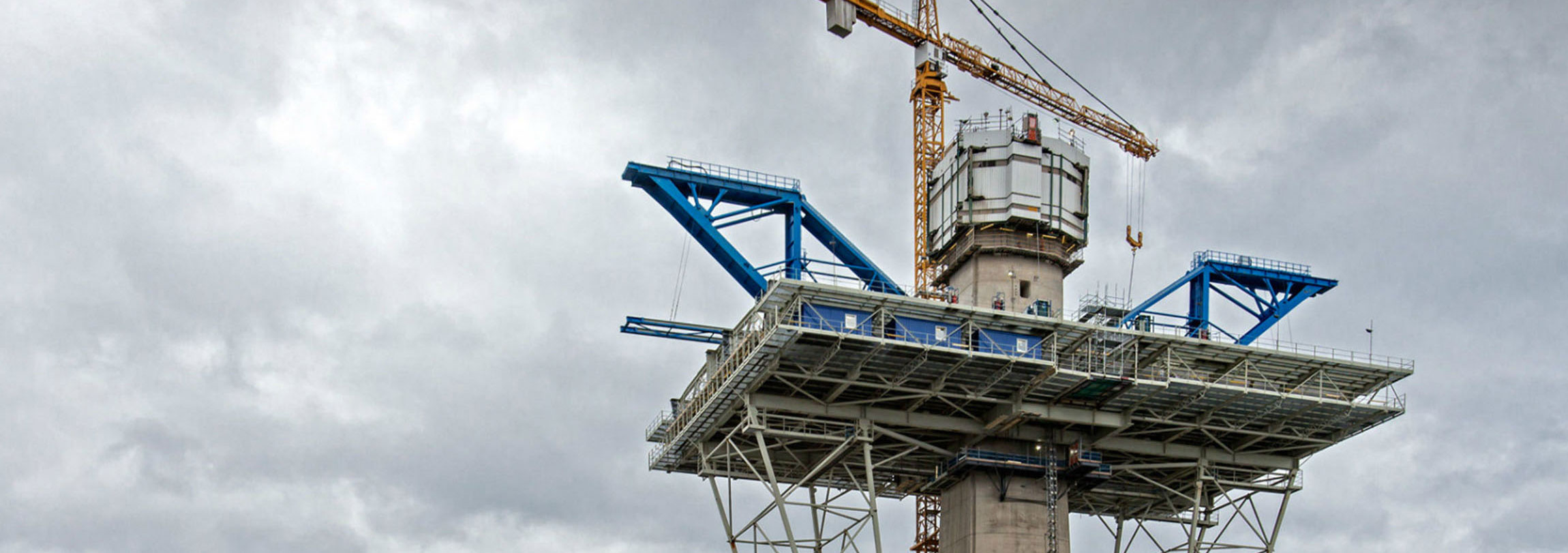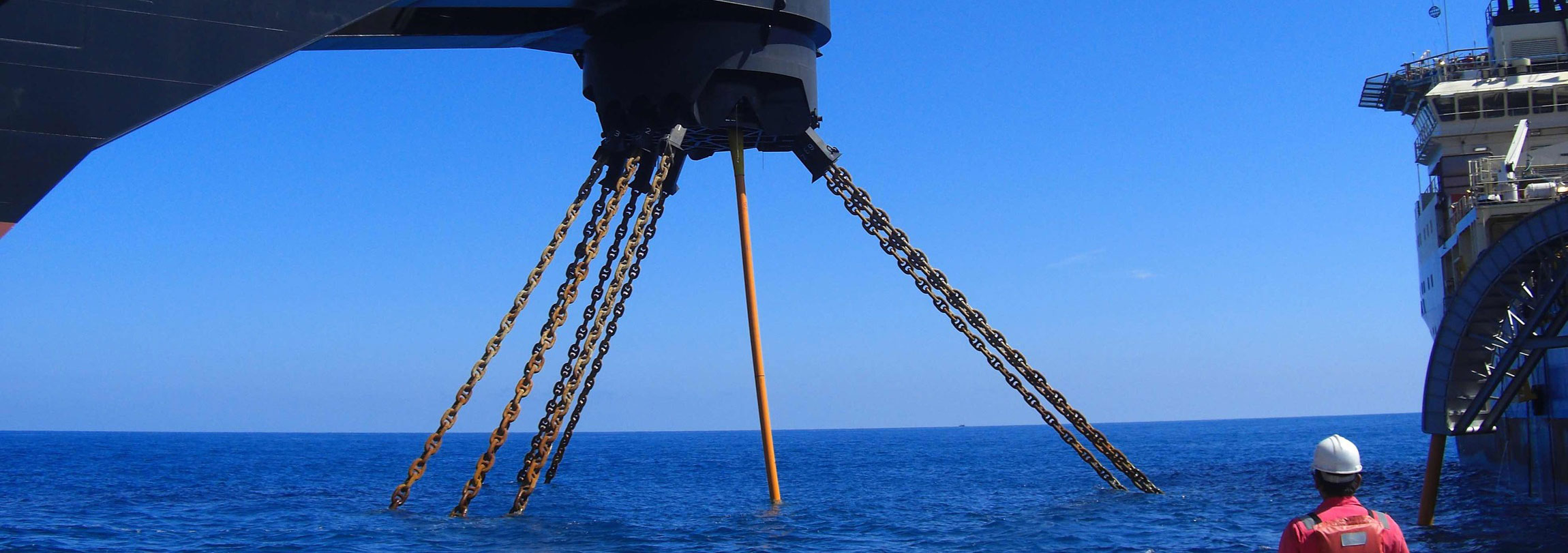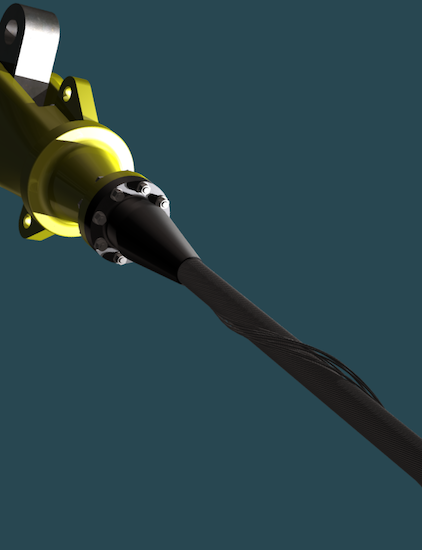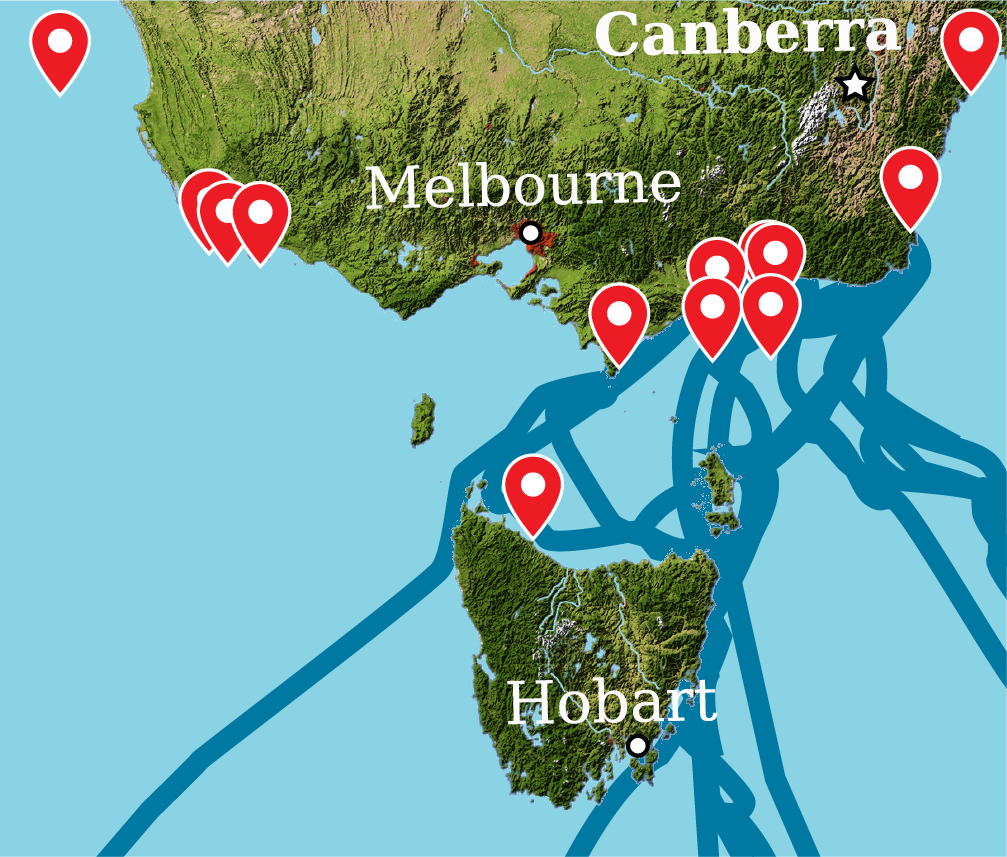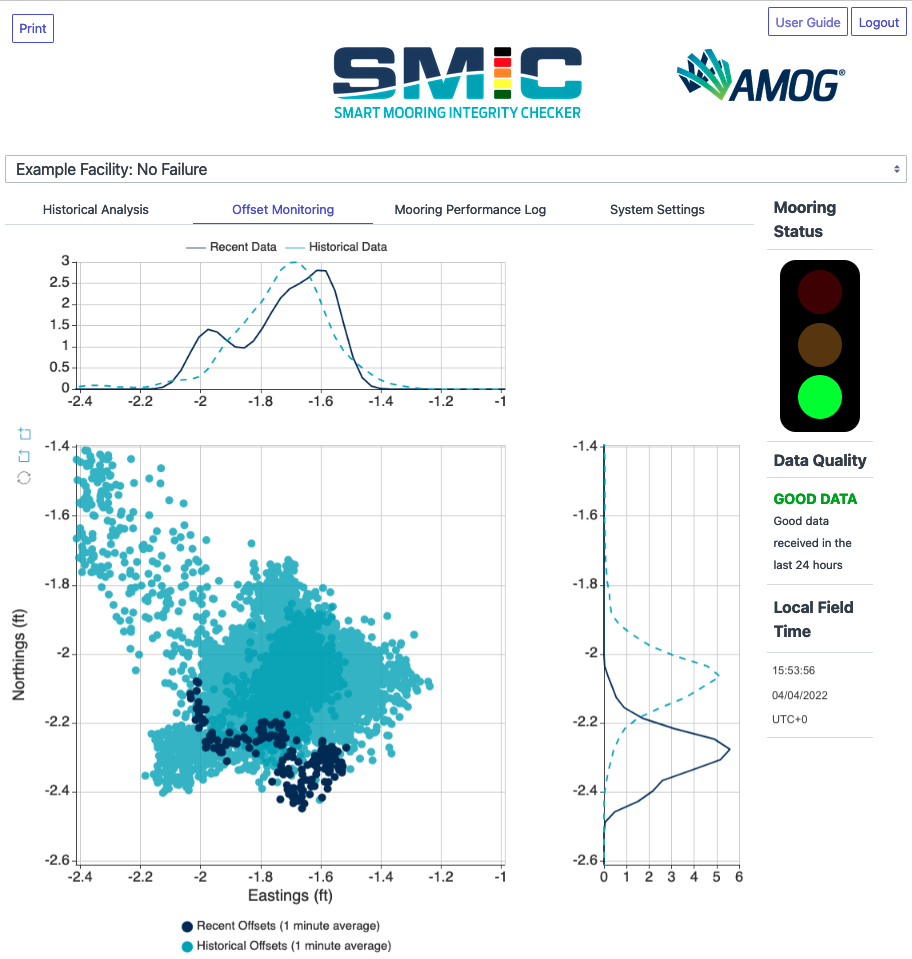Paton, C.G., Carra, C., and Sincock, P., Paper Number OTC-18039, Proceedings of Offshore Technology Conference, 1-4 May, Houston, Texas, USA, 2006.
Abstract
Measurement and analysis of the stability of Single Point Moored (SPM) vessels has been conducted over the last few decades, resulting in well established analysis techniques for the assessment during conceptual design of the stability of the motions of SPM's on their moorings. However during the course of a recent conceptual study for a permanently moored deep water FPSO, large unstable coupled sway-yaw motions were observed during time domain verification analyses.
Similar fishtailing responses have been observed in reality at a number of SPMs and extensive studies have been undertaken [7, 9]. However the motions observed during the time domain analyses were so severe that the proposed mooring system would not have been able to hold the FPSO on station.
This unstable behaviour was not predicted by the well established stability analysis techniques. Review of the literature and a programme of sensitivity tests of the numerical modelling approach indicated that the observed sway-yaw response was not an artefact of assumptions and simplifications in the moored system stability model. The assumption that the stability of the mooring system could be assessed from the steady environmental forces was found to have the greatest influence on the observed moored system stability.
Further numerical study indicated the existence of a bifurcation instability in the mooring system configuration not predicted by well established stability analysis techniques. The analyses reported here indicated that when developing mooring systems for deep water FPSOs, ignoring the destabilising effect of time varying forces in the stability analysis could result in a mooring design unfit for service.
Copyright © 2006 Offshore Technology Conference

